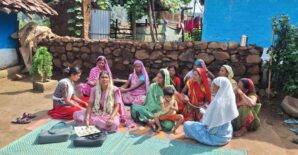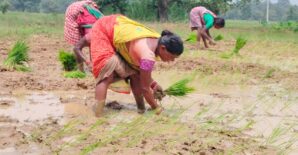 India’s high ranking on the Global Hunger Index (GHI) again this year brings to the fore the disturbing reality of the country’s stubbornly high proportions of malnourished children—more than one-fifth of Indian children under five weigh too little for their height and over a third are too short for their age.
India’s high ranking on the Global Hunger Index (GHI) again this year brings to the fore the disturbing reality of the country’s stubbornly high proportions of malnourished children—more than one-fifth of Indian children under five weigh too little for their height and over a third are too short for their age.
At 31.4, India’s 2017 GHI score is at the high end of the “serious” category, and is one of the main factors pushing South Asia to the category of worst performing region on the GHI this year, followed closely by Africa South of the Sahara. India is ranked 100th out of 119 countries, and has the third highest score in all of Asia—only Afghanistan and Pakistan are ranked worse.
“Even with the massive scale up of national nutrition-focused programs in India, drought and structural deficiencies have left large number of poor in India at risk of malnourished in 2017,” said P.K. Joshi, IFPRI Director for South Asia. “The on-going efforts are expected to make significant changes in improving the existing situation. It is welcoming that India has developed and launched an action plan on “undernourishment free India” by 2022. The Action plan shows stronger commitment and greater investments in tackling malnutrition in the coming years.”
As of 2015-16, more than a fifth (21 percent) of children in India suffer from wasting (low weight for height)—up from 20 percent in 2005-2006. Only three other countries in this year’s GHI—Djibouti, Sri Lanka, and South Sudan—show child wasting above 20 percent, and India’s child wasting rate has not shown any substantial improvement over the past 25 years. By contrast, the country has made considerable improvement in reducing its child stunting rate, down 29 percent since 2000, but even that progress leaves India with a relatively high stunting rate of 38.4.
Globally, the Central African Republic (CAR) has the highest score (reflecting the highest hunger level) of any country ranked in the report, and is the sole country in the Index’s “extremely alarming” category. CAR has the same score in 2017 as it did in 2000, suggesting any progress made in reducing hunger in the country in recent years has been reversed of late. Several other countries including Sri Lanka, Mauritania, and Venezuela also have higher GHI scores in 2017 than in 2008, after witnessing falling scores in the previous two decades.
“Conflict and climate related shocks are at the heart of this problem. We must build the resilience of communities on the ground, but we must also bolster public and political solidarity internationally. The world needs to act as one community with the shared goal of ensuring not a single child goes to bed hungry each night and no-one is left behind.” said Concern Worldwide CEO Dominic MacSorley
Despite recent setbacks, the report spotlights some areas of progress in the fight against global hunger. The level of hunger in developing countries decreased by 27 percent since 2000. Declines in average hunger at the regional or national levels obscure some grim realities though. The averages can mask lagging areas where millions are still hungry, demonstrating the need to hold governments accountable not only for investments in timely data but also for building resilience in communities at risk for disruption to their food systems from weather shocks or conflict.
Uneven hunger levels bring into sharp focus this year’s theme of ‘the inequalities of hunger’, which emphasizes the inequalities of social, economic and political power underlying nutritional inequalities. Groups with the least social, economic, and political power like women and girls, ethnic minorities, and the rural poor often also experience greater levels of poverty and hunger.
“With a GHI score that is near the high end of the serious category, it is obvious that a high GDP growth rate alone is no guarantee of food and nutrition security for India’s vast majority. Inequality in all its forms must be addressed now if we are to meet SDG 2 of Zero Hunger for everyone by 2030,” said Nivedita Varshneya, Welthungerhilfe Country Director India.
The GHI, now in its 12th year, ranks countries based on four key indicators: undernourishment, child mortality, child wasting and child stunting. The 2017 report ranked 119 countries in the developing world, nearly half of which have “extremely alarming”, “alarming” or “serious” hunger levels.
More information can be found at: http://www.globalhungerindex.org/
Interpreting India’s Performance on the Global Hunger Index



